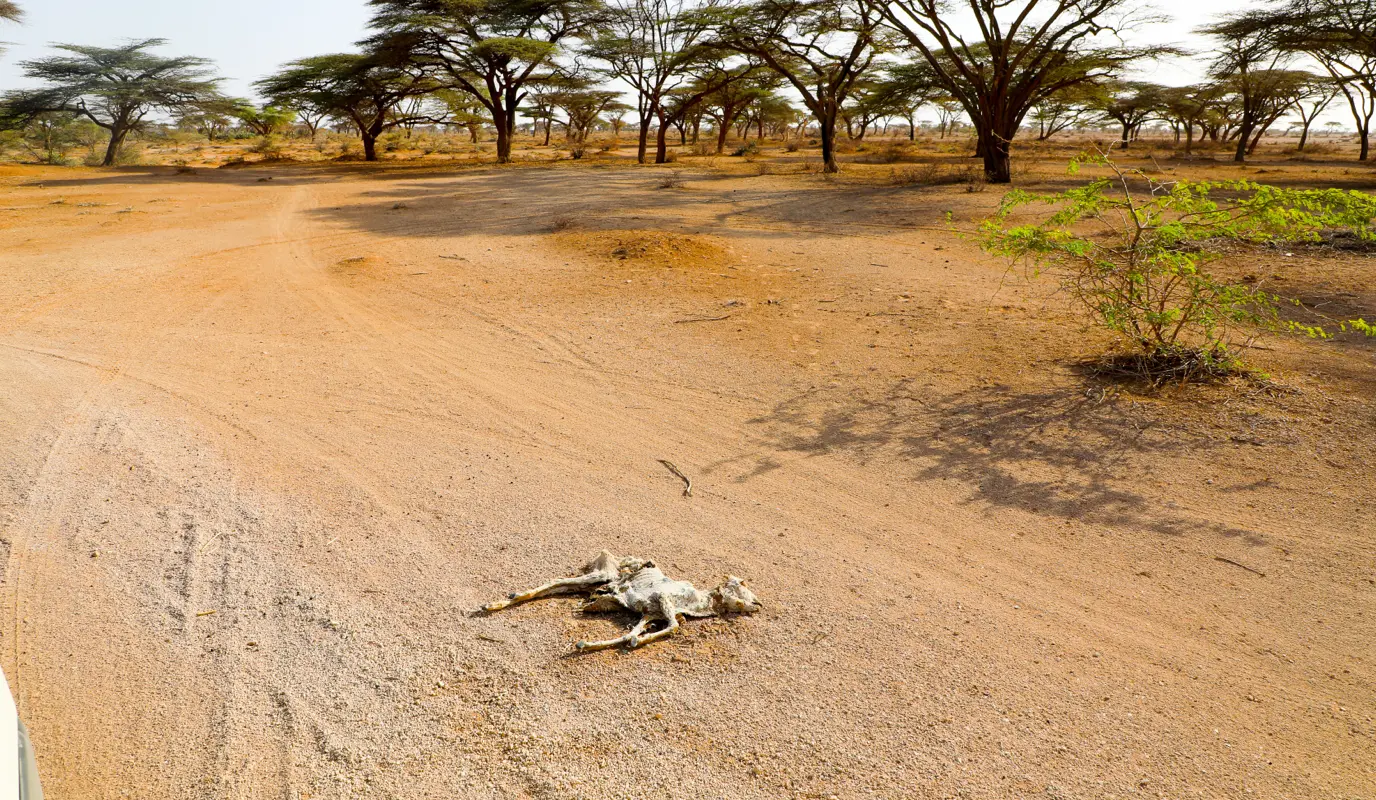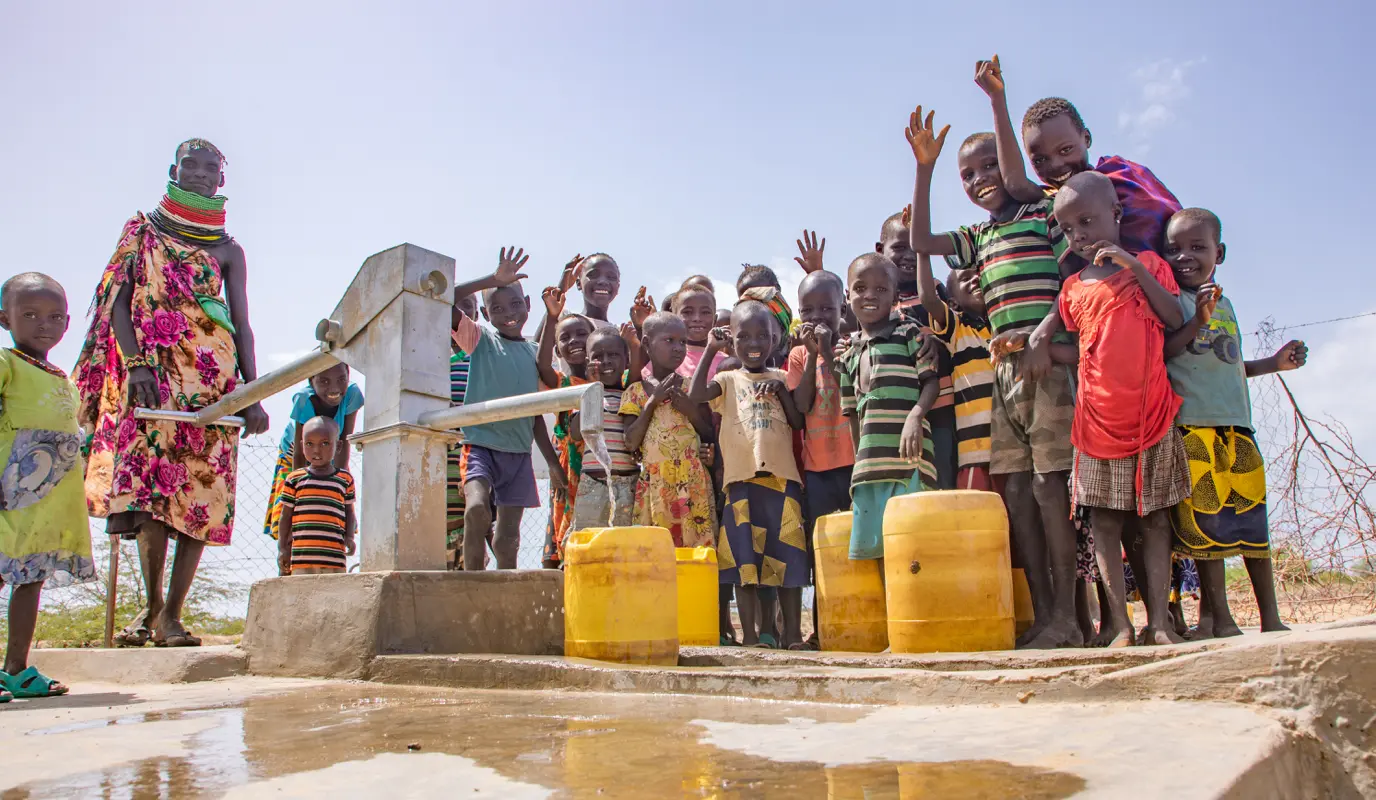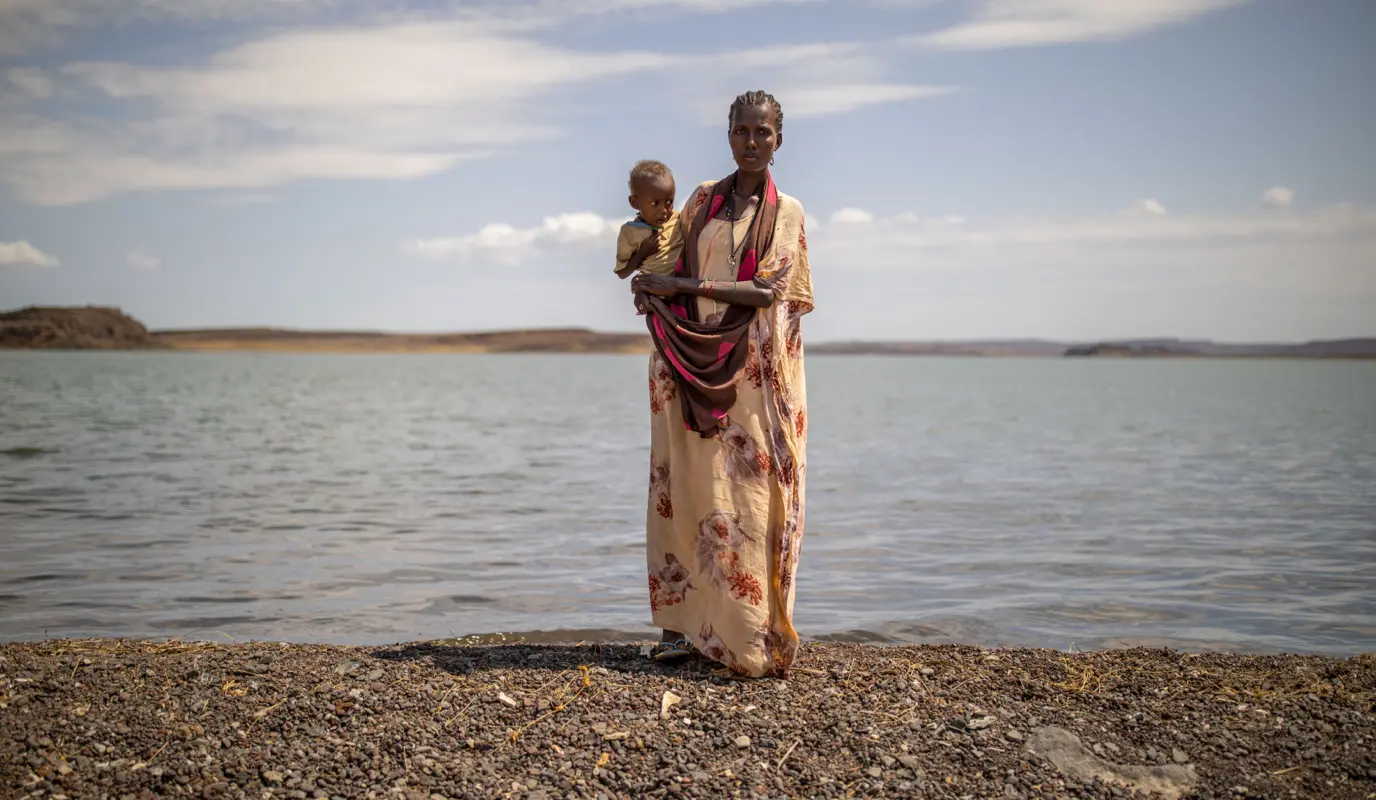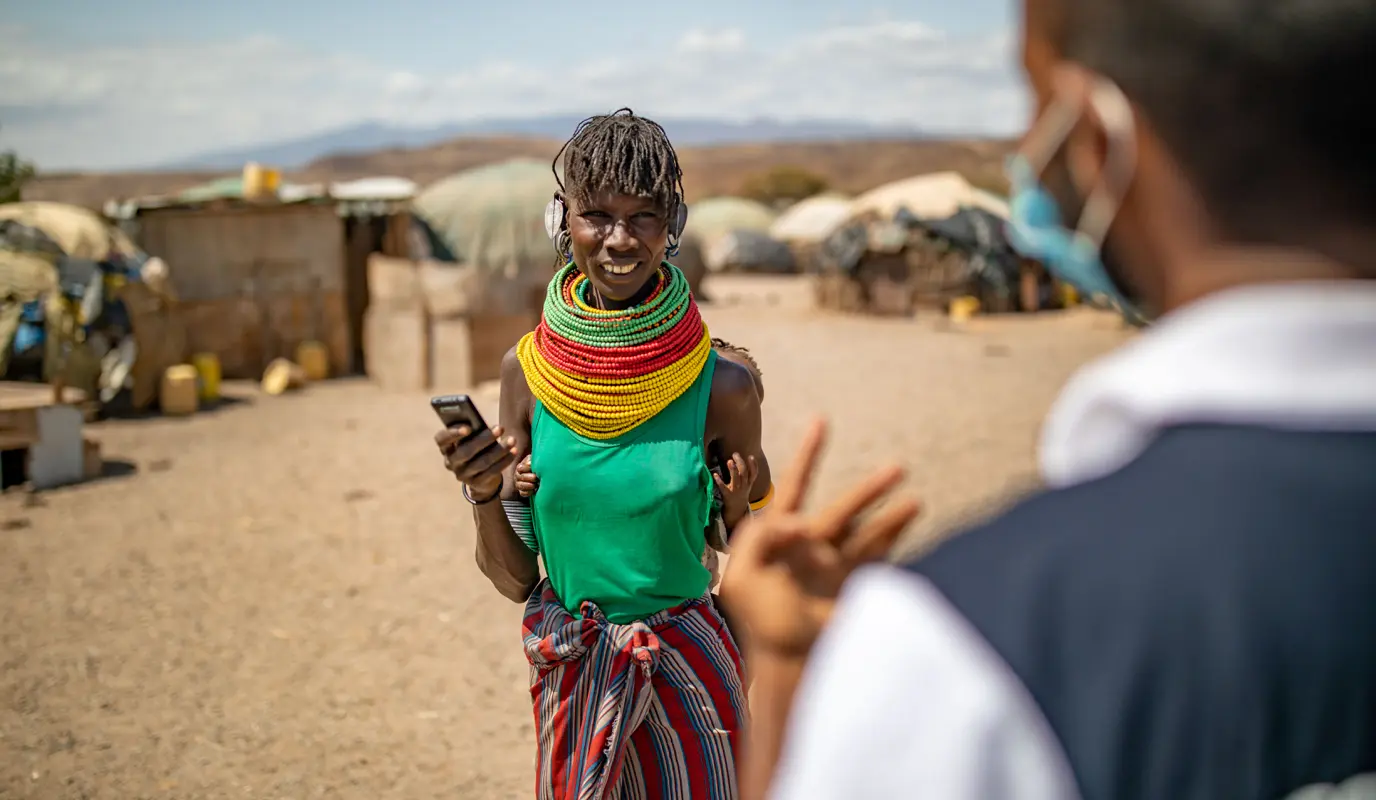News
The Horn of Africa crisis, explained
You may have heard about catastrophic droughts across Ethiopia, Kenya, and Somalia — here’s what the situation really means for the region's most vulnerable people.
Read MoreAkiru Leakinoi pulls the material of her shirt up around her stomach as she explains how she tries to prevent the feeling of hunger: “I just tighten my clothes like this until the evening when I might get some milk.
“Once I went for a full day without any food,” she adds. “I woke up the following day and I couldn't get up.” The neighbors came to her rescue with some tea.

In Marsabit — which sits at the center of northern Kenya and is home to Lake Turkana, the world’s largest alkaline lake — Akiru’s story is unconscionably common. The county has faced droughts for most of its history due to an arid climate, but these patterns have accelerated over the last decade, leaving it one of the centers of the Horn of Africa’s latest crisis: a series of failed rains that has led to the worst droughts the community has seen in over 40 years.
But that’s just one part of the story: Layers of crisis in Kenya are undermining the way of life of hundreds of thousands of people like Akiru.
Like many of the people in northern Kenya, Akiru Leakinoi’s community are nomadic pastoralists, herding sheep and goats near Lake Turkana. It’s a hard life, but one that — until recently — was manageable.
“Our goats and sheep play a very important part of our life,” says Akiru. “If there is enough grass for them, I can get enough milk for my family and to feed my children. If I sell one of them, I can get good money to buy food and to pay for school fees to get my children a good education. And, of course, we can slaughter a goat to eat.”

“The challenge of having any livestock in these conditions is clear to everyone,” says 30-year-old Regina Ekiru, who lives on the other side of Lake Turkana in the county that shares its name. In 2017, a drought that had begun in the final months of the preceding year was declared a national emergency. It’s an event that, five years and another crisis later, is still fresh in the minds of many of the area’s residents.
“Everybody in this village can tell you about the drought in 2017,” adds Akiru, whose husband lost 100 sheeps and goats to the drought. “It killed about three quarters of the animals in the area. There were dead goats everywhere. Everybody remembers that.” She adds: “Those things are happening now.”
In February of 2020, Marsabit and Turkana saw a rare event: rain. However, this precipitation, combined with unusually warm temperatures for February, made excellent breeding conditions for locusts. This couldn’t have been more poorly timed, as the end of 2019 brought a biblical locust infestation across Africa and parts of southwest Asia. In Marsabit, it was the worst they’d seen in 70 years. Millions of the insects swarming the area and destroying crops and vegetation.
This included the grass that the goats and sheep rely on. Milk yields dropped by half as a result of the livestock not getting enough nutrients. What they were able to eat didn’t help: The remaining grass was covered in locust droppings that, when ingested, left the animals sick with diarrhea.
Akiru’s husband was one of the community’s many herders who moved their livestock to more fertile pastures, but this also came at a cost, leaving people in the village without vital sustenance and lower incomes.
Then the rest of 2020 happened.
The first cases of COVID-19 were confirmed in Kenya on March 12, 2020, reported in the capital city of Nairobi (just over 260 miles south of Marsabit) and in the southeast coastal city of Mombasa (approximately 450 miles away from Marsabit). By March 26, lockdown and screening measures had reached Marsabit County, with the county’s commissioner Evans Achoki was urging residents to stay home and avoid unnecessary travel.
“Everything has stopped and life has become hard,” 33-year-old Lokaale Ekiru (who lives in the same village as Akiru Leakinoi) told us in August of 2020. “We’ve been told to wash our hands and put on masks in public, but we don't feel safe and can't afford soap.”
Lokaale was one of the many Marsabiters who lost all of her livestock during the deadly drought of 2017. Unable to make up for the losses, she found a business in burning wood to make charcoal and selling it on the side of the road — a venture many of the poorest women in her community undertook. However, the lockdowns imposed in March of 2020 flatlined her business.
“I used to be able to sell around a bag or two of charcoal a week by the side of the road for around 700 shillings (about $6.65),” she says. “But now, because of restricted movement, fewer lorries pass and people have less money, so sometimes I only sell one bag a month.” Her husband is also unemployed and finds work sporadically, sometimes enough to buy a bag of maize flour.
Regina also sells charcoal along the road; her husband cuts firewood to sell. “That is all we can do,” she explains. “We are just surviving.”

Not everyone in northwestern Kenya are pastoralists, though this hasn’t made the last few years any easier for them. Holding her one-year-old baby in her arms, Marin Lemotou (22) looks out over the flat water of Lake Turkana.
“A few years ago fishermen used to be able to catch 30 fish in a day. Now it’s around one or two if we’re lucky,” she says. It is, Marin adds, “all about the fish here.” She and her husband had some livestock, but most of them were killed in 2017. The remaining goats in the village suffered from their own hunger crisis during the 2020 locust crisis.
These persistently harsh seasons have left Marin’s community of El Molo Bay increasingly dependent on fish, however these conditions have also made it harder to rely on the lake. Restrictions in 2020 also prevented fishermen like Marin’s husband from searching out more waters. There was no movement, which left Marin’s family — and many of the other families in the coastal community — without any options for food.

The net effect of these events has led to Kenya’s biggest crisis: hunger. COVID-related inflation led to price increases as high as 33% for staples like sugar. And incomes have dropped: Before 2020, Marin’s family used to make about $28.50 per month. Since then, their income has fluctuated between $4.75 or even $1.90 per month — a drop of more than 93%.
“My four children don't know that there is not enough food,” says Lokaale Ekiru. “They always cry and follow me wherever I go if they are hungry. But I don't have anything to give them so I have to escape and go and make charcoal again.
“I don't have enough food to feed myself, but it makes me feel even worse when I see the children going hungry,” she adds.
“A grandma from Sarima died this year because of hunger and she was buried on the other side of the village,” says Akiru Leakinoi. “It’s not common to see deaths from hunger here; people are getting worried now.” Echoing Lokaale, she adds that the hardest part of this is watching her children go hungry without any solution to offer them. “Sometimes I have to escape and go to sleep somewhere and leave them crying until they go to sleep; I don't know what else to do.”
Concern is responding to those hit hardest by the Horn of Africa drought in Ethiopia, Kenya, and Somalia, and has been working with pastoralists and fishing families in Marsabit and Turkana since 2020 to help mitigate the earlier elements of crisis — which are still being felt.
One key response over the last two years has also been simple: cash transfers. On August 7, 2020, the first payment from Concern Worldwide reached Lokaale’s phone via Kenya’s mobile banking service, M-Pesa. She and 27 other women in the village received five monthly installments of 4,700 Kenyan shillings ($45) to navigate the tail-end of a catastrophic year.

“It has helped me so much,” she said a few weeks after the transfer, which she first used to cover a 2,000 shilling ($19) bill in her local shop. She also sent some money into Marsabit town, which bought her a 55-pound bag of rice. “I’ve never bought so much rice! I’m going to see how long it will last,” she said. “When the rice runs out I’ll have to go back again and borrow; I don't have any other option. But for now it’s the only help we have received, and it’s made a huge difference.”
Akiru was one of the other 27 women who received a cash transfer as part of Concern’s emergency response. “It was like a miracle,” she said. “There is no way I could have raised such money from anywhere.” Like Lokaale, Akiru used her first transfer to pay off her credit accounts at the local food shops. The remaining transfers she hoped to save up.
“I really want to be in a situation where I can depend on myself and have a business. Then I could buy a goat and give its milk to the kids and not just wait for help from Concern. As much as I appreciate it, I want to be helped to help myself.”